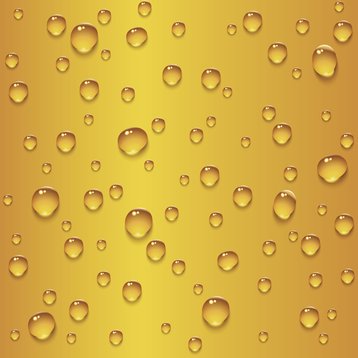PUE has become the go-to metric for operators, but it has had some unintended consequences, including a staggering increase in the use of water by data centers.
In a previous blog at Emerson Network Power site, we began to explore ‘missing energy’ associated with the current release of PUE, namely the lack of accountability for the energy associated with owning, maintaining, and operating stand-by generators and the evaporative energy content of the water used in the cooling system. One unintended consequence has been the pursuit and reporting of PUE’s in the realm of 1.10 derived solely on utility sourced electrical energy. These PUEs fail to account for generator fuel and the energy associated with the water used in evaporative cooling.
We captured Standby Generator Energy (SGE) in part one and today introduce Water Equivalent Energy (WEE) to further revise PUE to account for the water used within the cooling system.
Vaporization energy
As most water that is ‘used’ in a data center is associated with cooling through vaporization, hence using the vaporization energy potential of water, we will develop a factor to account for this energy used within the data center in order to develop a normalized PUE. This revised PUE formula can be used to compare and contrast a water-cooled design with a DX or other technology cooling scheme. We will find that there is a lot more parity in data center design and operation than first meets the eye when using the legacy PUE formula.
Before we get too far into the nuances of revising PUE to account for water ‘use’ let’s make one thing perfectly clear – for the most part the water associated with cooling data centers is evaporated meaning it is pulled from a local source / utility and evaporated into the atmosphere where it will linger for a brief period of time before returning to the surface as rain / snow. Yes this does remove water from the local eco-system, water table, etc. but for the most part the water is not harmed.
So let’s start with the evaporative energy of water representing a constant of 2,257 kJ of energy per Kg / Liter or .627kWh per liter of water. We will apply this to our model data center with a PUE of 1.10 and a WUE (water usage effectiveness) of .4l/kW [WUE or water usage effectiveness, is the annual water use divided by the IT equipment energy]. Industry data indicate a typical flow rate of 0.3 to 0.5l/kW for direct evaporative systems with recirculation. Indirect evaporative systems have flow rates on the order of 1 to 2l/kW. For the existing methodology of reporting PUE we would have the annual Site Electrical Energy (SEE) at 9,636,000 kWh and the water used during the period approximately 3,854,000 liters. This water therefore represents 2,417,000 kWh of Water Equivalent Energy (WEE) for use in calculating a true PUE.
We can now make a very important update to PUE, now PUER (Power Usage Effectiveness Revised) to account for the Water Equivalent Energy (WEE) giving us a more accurate model of the real PUE for the data center. The PUER formula enables us to better model cooling technologies for total energy use when evaluating designs for new builds and/or upgrades to an existing site.
Our new formula for PUE to account for these sources of energy is:
We further define the components as: SEE, Site Electrical Energy is derived from one or more utility meters, SGE, Standby Generator Energy is calculated as: actual fuel consumed (flow meters and/or purchase receipts) X Electrical Energy Equivalent Ratio (fuel specific), WEE, Water Equivalent Energy is calculated as actual water consumed (inflow minus outflow) X WEEF (Water Equivalent Energy Factor {0.627kWh/l in this case} from climate zone table / BIN data, etc.), and ITEE, IT Equipment Energy as currently reported within PUE as either output of UPS, output of PDUs, or input to IT devices inclusive of servers, storage, networking, IDF, and communications.
In our 1 MW model data center with a currently reported PUE of 1.10 we have the following actual energy components: SEE 9,636,000 kWh, SGE 403,000 kWh, WEE 2,417,000 kWh, ITEE 8,760,000 kWh. Applying these to our PUER formula we find:
Our ‘new’ PUE of 1.42 is still a respectable number in the grand scheme of things but a long way from the ‘claimed’ PUE of 1.10. These inaccurate performance claims have created a perceived disparity between evaporative cooled data centers and those deploying other technologies such as eco-mode pumped refrigerant or closed-loop chilled-water with air-cooled chillers. Now with PUE Revised we have a proper formula to account for all energy sources used within a data center and are able to make a meaningful analysis of all of our available cooling options.
Were we to quickly apply this model to an indirect evaporative cooled data center, one with a similar electrical PUE, we would find the water flow rate of 1.5l/kW equates to an annual consumption of 14,454,000 liters with a WEE of 9,063,000 kWh. We have the following actual energy components: SEE 9,636,000 kWh, SGE 403,000 kWh, WEE 9,063,000 kWh, and ITEE 8,760,000 kWh. Applying these to our PUER formula we find:
Not quite the PUE of 1.2 to 1.3 typically reported for an indirect evaporative cooled data center once we account for WEE.
The Green Grid, in White Paper #49 – PUE: A Comprehensive Examination of the Metric, section 4.4.2 clearly states “The Green Grid believes that more data is necessary to assess areas for potential improvements and evaluating changes intended to improve PUE within a data center.” We believe this two part series on refining PUE has provided the basic framework for such change to take place in order that the data center industry may have a truly meaningful and comprehensive metric to use in evaluating all sources of energy use within a data center.
Finally – it is worth noting that there are no silver bullets, magic beans, or unicorns when it comes to powering and cooling a data center. We encourage you to carefully evaluate all design options when designing your next data center and consider the broader energy / resource ecosystem. Water is still a plentiful, cost-effective resource that properly sourced and managed can continue to effectively cool data centers for many years to come.
Who knows, if you have access to 100% renewable energy it may make sense to build an all-atomic, water-less data center. You certainly don’t want to ‘drink California dry’ or have Greenpeace targeting your data center in their next report: How Wet is the Cloud?






